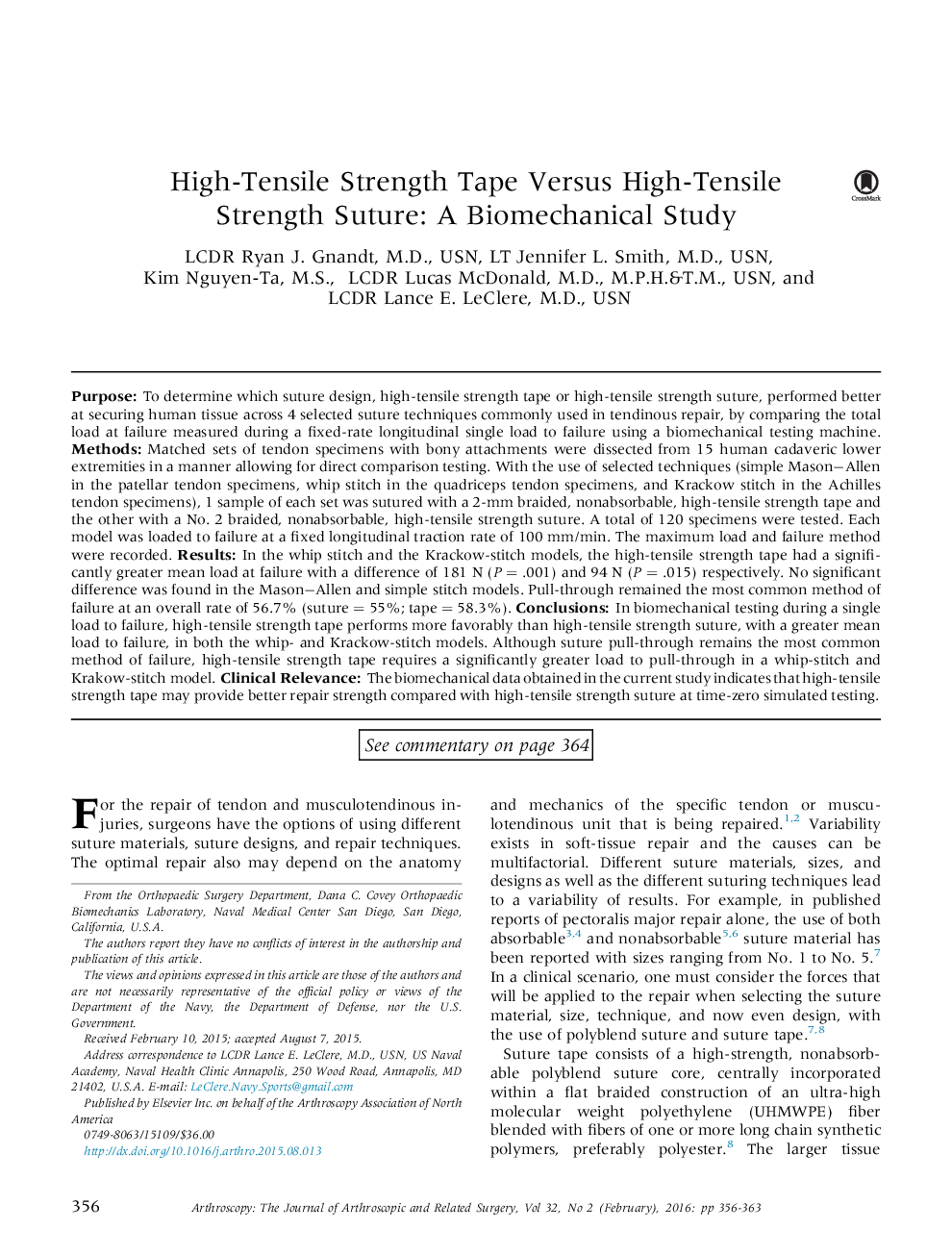| کد مقاله | کد نشریه | سال انتشار | مقاله انگلیسی | نسخه تمام متن |
|---|---|---|---|---|
| 4042323 | 1603474 | 2016 | 8 صفحه PDF | دانلود رایگان |
PurposeTo determine which suture design, high-tensile strength tape or high-tensile strength suture, performed better at securing human tissue across 4 selected suture techniques commonly used in tendinous repair, by comparing the total load at failure measured during a fixed-rate longitudinal single load to failure using a biomechanical testing machine.MethodsMatched sets of tendon specimens with bony attachments were dissected from 15 human cadaveric lower extremities in a manner allowing for direct comparison testing. With the use of selected techniques (simple Mason−Allen in the patellar tendon specimens, whip stitch in the quadriceps tendon specimens, and Krackow stitch in the Achilles tendon specimens), 1 sample of each set was sutured with a 2-mm braided, nonabsorbable, high-tensile strength tape and the other with a No. 2 braided, nonabsorbable, high-tensile strength suture. A total of 120 specimens were tested. Each model was loaded to failure at a fixed longitudinal traction rate of 100 mm/min. The maximum load and failure method were recorded.ResultsIn the whip stitch and the Krackow-stitch models, the high-tensile strength tape had a significantly greater mean load at failure with a difference of 181 N (P = .001) and 94 N (P = .015) respectively. No significant difference was found in the Mason−Allen and simple stitch models. Pull-through remained the most common method of failure at an overall rate of 56.7% (suture = 55%; tape = 58.3%).ConclusionsIn biomechanical testing during a single load to failure, high-tensile strength tape performs more favorably than high-tensile strength suture, with a greater mean load to failure, in both the whip- and Krackow-stitch models. Although suture pull-through remains the most common method of failure, high-tensile strength tape requires a significantly greater load to pull-through in a whip-stitch and Krakow-stitch model.Clinical RelevanceThe biomechanical data obtained in the current study indicates that high-tensile strength tape may provide better repair strength compared with high-tensile strength suture at time-zero simulated testing.
Journal: Arthroscopy: The Journal of Arthroscopic & Related Surgery - Volume 32, Issue 2, February 2016, Pages 356–363
